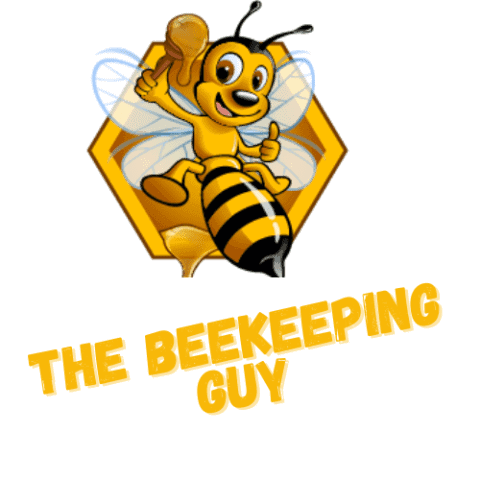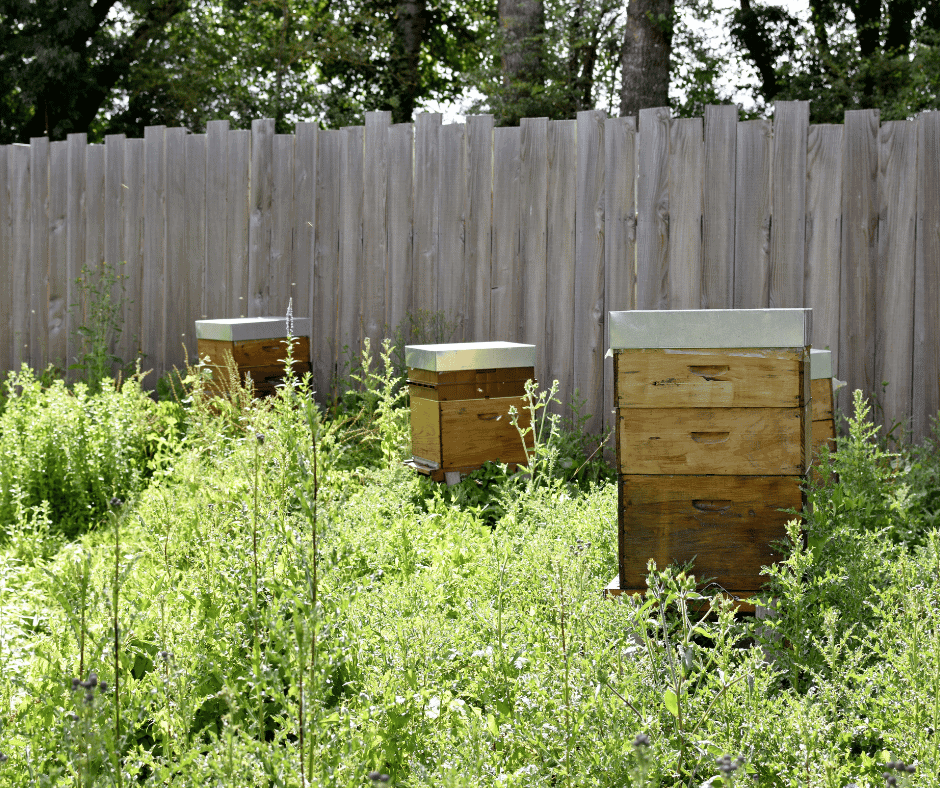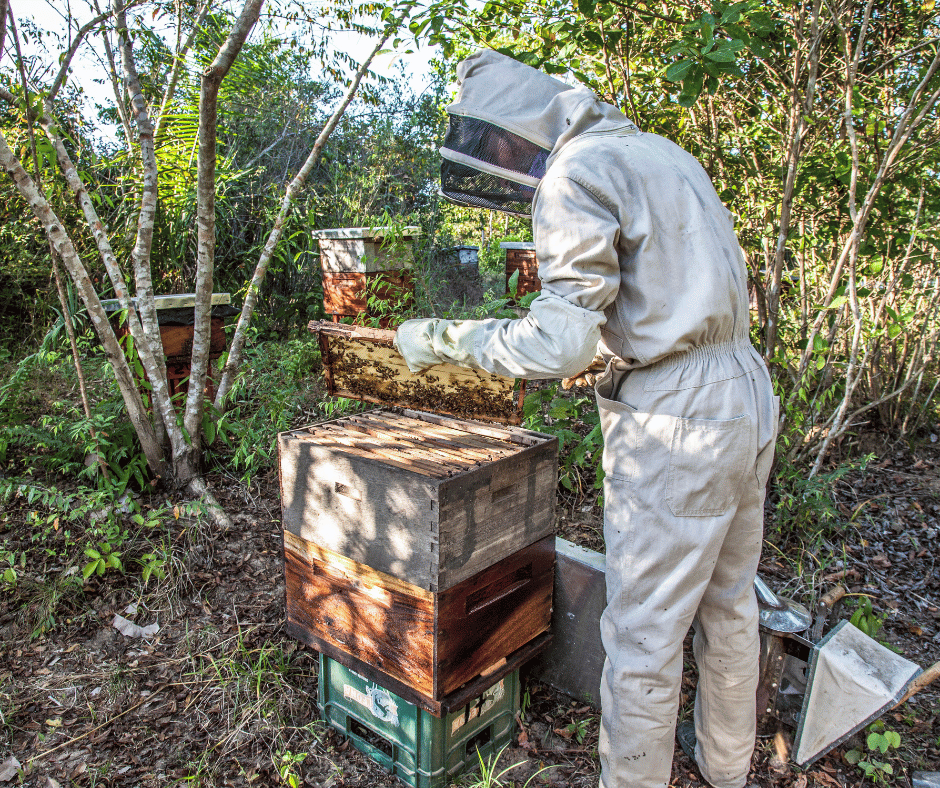
Harvesting honey from a beehive is an age-old tradition that has been practiced for centuries. It is a rewarding experience to witness the process of extracting sweet gold from your own hive, and it can be done safely with the right equipment and knowledge.
In this blog article, we will uncover the secrets of honey extraction from a beehive by exploring essential equipment needed for safe harvesting, understanding the process involved in collecting honey from bees, and what you should consider when harvesting your own hive’s sweet gold. With these tips in mind, you’ll be well on your way to preparing yourself and your bee colony for successful honey extraction!
Table of Contents
Get All Your Gear In Order

The first step is to make sure that all of your protective gear is in place before entering any hive or apiary. This includes wearing long pants and sleeves as well as gloves and a hat with netting over your face for extra protection against stings. You should also have access to smoke which will help keep any agitated bees at bay while you’re working inside their home.
Once everything is ready, locate an area where there are plenty of active hives so that when one hive has been harvested another can quickly replace it without disturbing too many other colonies nearby; this will help maintain balance within the local bee population by preventing them from becoming overcrowded or stressed out due to lack of resources such as food or space for new combs/honey production areas.
Once done with this step carefully remove frames containing capped cells full of ripe honeycomb – these frames should then be placed into either buckets or boxes depending on how much material needs collecting per session (it’s best not to overload yourself here!).
Now Comes The Uncapping

Next up comes uncapping: use either an uncapping knife or fork specifically designed for this purpose – never use anything sharp like scissors that could damage delicate comb structures! Carefully scrape off wax cappings until all cells are exposed before placing them back onto clean frames ready for extraction via centrifugal force using either manual hand-cranked extractors (for smaller amounts) OR electric-powered machines capable of handling larger volumes at once – whichever method works best according to individual preference/situation. Finally, strain out the remaining bits through cheesecloth/strainer mesh before bottling up liquid gold goodness straight away – don’t forget to label jars clearly so everyone knows what type/flavor they contain later down line!
Uncovering the Secrets of Honey Extraction from a Beehive

As we have said, once opened up, frames containing wax combs filled with nectar will need to be removed carefully without damaging them too much. Then the next step involved using an uncapping knife (or similar tool) to remove any wax cappings that may have been placed over cells containing ripe nectar by worker bees in order for them not to evaporate away during storage.
And now comes one of the most important steps: spinning out all that delicious liquid gold! A centrifugal extractor is usually used for this purpose; however if one isn’t available then other methods such as straining through cheesecloth or simply allowing gravity to do its thing can also suffice just fine! Finally, once all excess water has been removed from your extracted honey it’s ready for bottling and consumption – yummmm!!
Understanding the Process of Collecting Honey from Bees
Collecting honey from bees is an intricate process that requires knowledge, skill, and patience. It’s important to understand the basics of beekeeping before attempting to extract honey from a beehive.
Once extracted it’s important that you store your precious bounty correctly; otherwise, it may spoil over time due to oxidation caused by air exposure during storage periods longer than two weeks at room temperature (or three months if refrigerated properly). To ensure maximum shelf life always keep harvested combs sealed tightly inside their containers until ready for consumption!
Exploring Essential Equipment for Safely Extracting Honey

Extracting honey from a beehive is an exciting and rewarding experience. However, as we pointed out at the beginning of this article, it’s important to ensure that you have the essential equipment for safely extracting honey. The right tools can make all the difference in ensuring a successful extraction process and protecting yourself from potential dangers.
The first piece of equipment you’ll need is protective clothing, such as beekeeping suits or veils with gloves and boots. This will protect your skin from stings while also preventing beeswax buildup on your clothes. You should also invest in a smoker to help calm down the bees before beginning the extraction process; this will reduce their aggression levels when they sense danger nearby.
Next, you’ll need some basic tools for handling frames of comb: hive tool, frame grip, uncapping knife or fork, brush/scraper combo tool (for cleaning off excess wax), and uncapping tank (to hold melted wax).
Finally don’t forget about safety gear like goggles/glasses which are necessary when working with hot liquids like melted wax during extraction processes!
Having these essential pieces of equipment will not only make extracting honey easier but also safer for both yourself and your bees!
What to Consider When Harvesting Your Own Hive’s Sweet Gold

Harvesting your own hive’s sweet gold can be an incredibly rewarding experience. Not only will you have the satisfaction of knowing that you are harvesting a product from nature, but you will also have access to some of the freshest and most delicious honey available. However, there are several things to consider when harvesting your own honey.
First and foremost, safety should always be a top priority when dealing with bees or any other type of an insect for that matter. It is important to wear protective clothing such as beekeeper suits and gloves in order to protect yourself from stings or bites while working around the hive. Additionally, it is essential to understand how different types of bees behave so that you can safely remove them without causing harm or distress.
Another important factor is timing; if possible try to harvest during times when temperatures are milder as this will make it easier for the bees inside the hive and reduce stress on them during extraction time.
Lastly, proper storage techniques must be employed once harvested in order to preserve its freshness over time; this includes storing at room temperature away from direct sunlight as well as sealing containers tightly after each use so no air enters into contact with the honey itself!
In conclusion, harvesting your own hives’ sweet gold requires careful planning and consideration before taking action – but don’t let these considerations discourage you! With patience and practice anyone can become proficient at extracting their very own batch of delicious golden goodness straight from nature’s bounty!
Preparing Yourself and Your Bee Colony for Successful Honey Extraction

Successful honey extraction requires careful preparation for both yourself and your bee colony. To ensure a successful harvest, it is important to take the necessary steps before you begin.
Then you need to inspect your beehive prior to harvesting in order to determine if there are any problems with pests or diseases that could affect their health during extraction.
If so, take appropriate measures such as treating them with approved chemicals or removing affected combs from the hive before beginning work on them.
Additionally, check for signs of swarming which can occur when bees become overcrowded in their hives – this can lead to decreased production of honey due to lack of space available for nectar storage within each comb cell!
Finally, once everything has been prepared properly and inspected thoroughly it’s time to start extracting!
Make sure that you do not disturb too many bees while working around their home – keep noise levels low by using electric smokers instead of open flames – then carefully remove each frame one at a time being mindful not to damage any comb cells containing precious nectar reserves!
Once all frames have been harvested using either an extractor machine or the traditional centrifugal force method (spinning) in order to get the maximum yield out of every drop possible without wasting any valuable resources!
By following these simple steps you will be well-prepared for success when it comes time to harvest sweet rewards from hardworking bees living inside your hive – good luck & happy extracting!!



